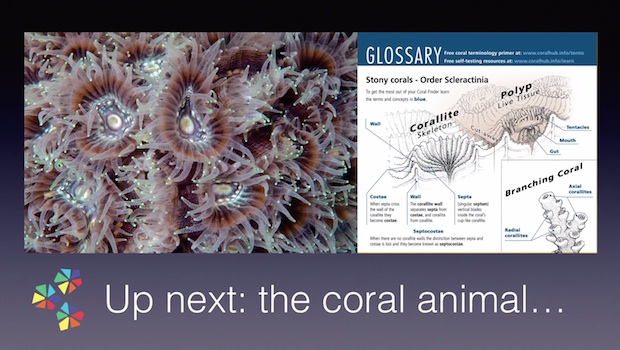Corals can be quite difficult to identify for the uninitiated, and even certain groups can be quite challenging to differentiate from each other. We are always super motivated to find the latest and greatest new corals, either in the wild, or unique strains in aquariums, but the folks over at Coral Finder have a serious mission to educate the rest of the world on how to properly identify corals, especially while diving underwater.
The Coral Finder field guide is one of the most accurate, useful, and practical coral guides ever created with the express mission of helping divers better learn their corals and now they are taking it a step further with the release of educational videos. The Coral Finder Toolkit videos are a companion series of videos for learning to identify stony corals underwater, and it explores the principles of identifying corals through key groups and learning groups to help tease the nuances between similar looking corals.
 After nearly two decades being obsessed with corals we still have to look closely when trying to differentiate Favia and Montastrea. We understand the concepts of intra- and extratentacular budding, but trying to explain it to a casual coral observer is easier said than done.
After nearly two decades being obsessed with corals we still have to look closely when trying to differentiate Favia and Montastrea. We understand the concepts of intra- and extratentacular budding, but trying to explain it to a casual coral observer is easier said than done.
The Coral Finder guide does a decent job of explaining these kinds of esoteric concepts but the movie series really dives in with multiple examples, close up shots and excellent examples of how to tease apart near twin coral genera such as Favia and Montastrea, and the practically feature-less Psammocora and Coscinarea.
 If you’re really gung-ho about learning corals, or taking your skills a step further, it would take us days to distill what we think we know about how to identify corals to someone. But thankfully the Coral Finder Toolkit videos do an amazing job of doing that already. There are five parts in the video series, again which we’ll emphasize are better watched with the Coral Finder field guide and it’s available to view both in English and Indonesian. [BYO Guides]
If you’re really gung-ho about learning corals, or taking your skills a step further, it would take us days to distill what we think we know about how to identify corals to someone. But thankfully the Coral Finder Toolkit videos do an amazing job of doing that already. There are five parts in the video series, again which we’ll emphasize are better watched with the Coral Finder field guide and it’s available to view both in English and Indonesian. [BYO Guides]



